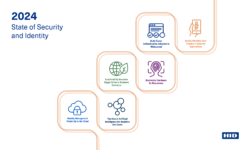Report Provides Mitigation Strategies to Defuse Intelligent Building Security Risks
The guidance is a collaborative effort between the Security Industry Association, ASIS Foundation and the Building Owners and Managers Association.

A new guidance provides both the security and facility professional with direction on how to protect their organizations against risks associated with Intelligent Building Management Systems (IBMS) vulnerabilities.
SILVER SPRING, Md. – The Security Industry Association (SIA), in partnership with the ASIS Foundation and the Building Owners and Managers Association (BOMA) Int’l, jointly released what is billed as a first-of-its-kind guidance for practitioners in the security and building management fields.
“Intelligent Building Management Systems: Guidance for Protecting Organizations” provides a framework to help decision makers assign a risk-based criticality or impact to their building, and asks relevant security questions to develop appropriate mitigation strategies. It also serves to establish a common language between the many intelligent building stakeholders, according to an announcement.
Included in the report is a framework that provides both the security and facility professional with direction on how to protect their organizations against risks associated with Intelligent Building Management Systems (IBMS) vulnerabilities.
The guidance aims to support such decision making in combination with relevant standards, guidelines and other resources. It provides checklists that take an organization’s risk level into account and then asks a series of directed security questions that lead to mitigation strategies.
The guidance is based on original research, “Building Automation & Control Systems: An Investigation into Vulnerabilities, Current Practice and Security Management Best Practice,” by David J. Brooks, Michael Coole and Paul Haskell-Dowland of Edith Cowan University in Perth, Australia. The research provides an exhaustive overview of identified intelligent building critical vulnerabilities and mitigation strategies.
The research is indispensable to helping stakeholders get a handle on both the challenges and the opportunities of this fast-growing market, says Sandra Cowie, CPP, director, global security and business continuity, principal, and 2018 ASIS Foundation president.
“The ASIS Foundation is delighted to work with our partners BOMA and SIA to support such critical research in a rapidly developing but insufficiently understood field. Building automation invokes cutting-edge issues and technology such as the Internet of Things [IoT] and advanced video analytics, as well as traditional concerns such as physical access control and proper procedures,” she says. “The integrated whole undoubtedly poses challenges that are still emerging.”
According to the report, the intelligent building market is growing 31% annually and is expected to exceed $59 billion by 2023. These systems are increasingly embedded into the contemporary built environment due to the demand for reduced operating costs, government regulation, and greater monitoring, control and operability.
However, this growth comes with a substantial set of security vulnerabilities that many security and facility professionals have not accounted for, according to the report. Importantly, the research finds a significant disconnect between security and facility professionals’ perceived understanding of intelligent building threats and risks versus actual dangers.
In addition, the report revealed that a lack of common terminology and practices can result in misunderstandings and siloed views of associated security risks. The report findings emphasize the need to:
- Take a multidisciplinary proactive management approach to intelligent building vulnerability mitigation
- Fuse multidisciplinary participants into an intelligent building security team
Additional findings include the recognition of intelligent building integrators and cybersecurity experts as partners who can help organizations better understand threats and risks and more effectively achieve intelligent building security.
“The research developed by the ASIS Foundation provides insights that should be leveraged by our members and the industry to better understand and identify vulnerabilities within intelligent building systems,” says SIA CEO Don Erickson. “An essential outcome from this project is the recommended guidance and checklist that will help security practitioners and security technology solutions providers work together to implement strategies to mitigate against potential risks.”
To learn more and download infographics and the free report, go here.
If you enjoyed this article and want to receive more valuable industry content like this, click here to sign up for our FREE digital newsletters!

Security Is Our Business, Too
For professionals who recommend, buy and install all types of electronic security equipment, a free subscription to Commercial Integrator + Security Sales & Integration is like having a consultant on call. You’ll find an ideal balance of technology and business coverage, with installation tips and techniques for products and updates on how to add to your bottom line.
A FREE subscription to the top resource for security and integration industry will prove to be invaluable.







